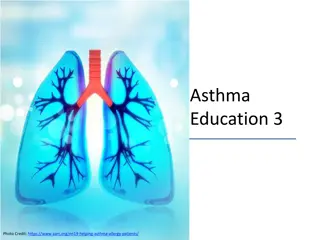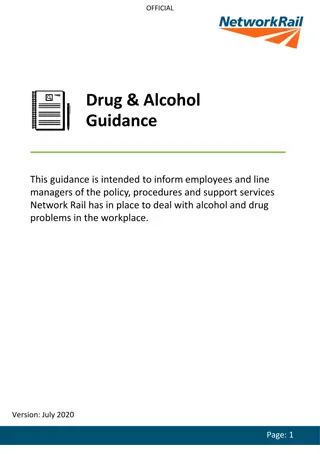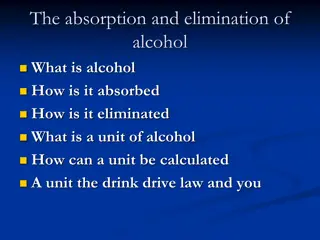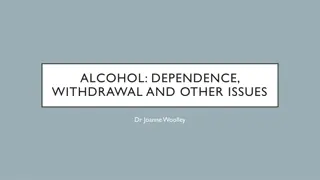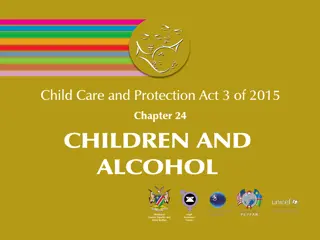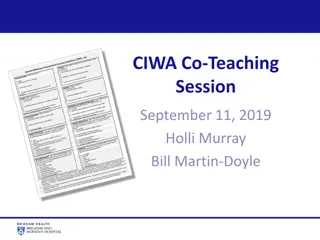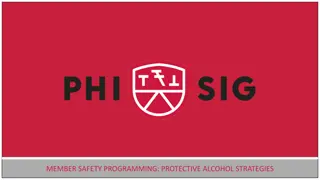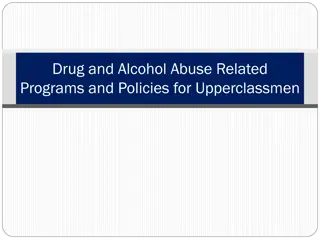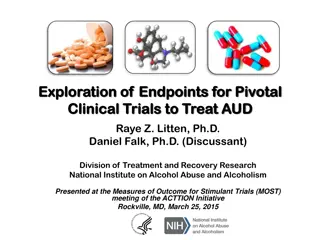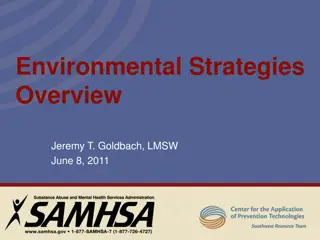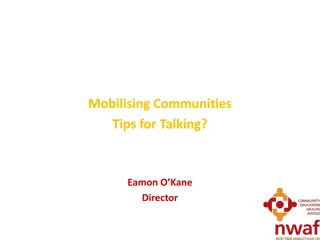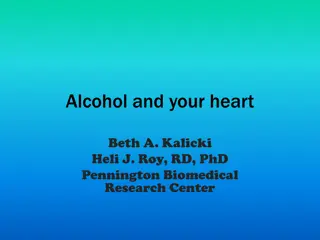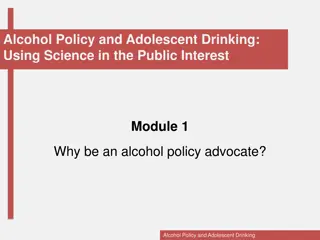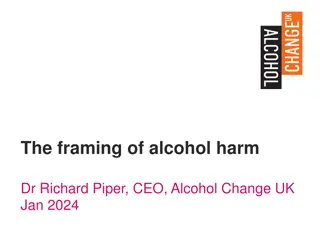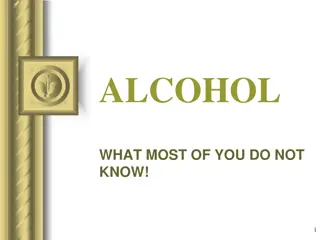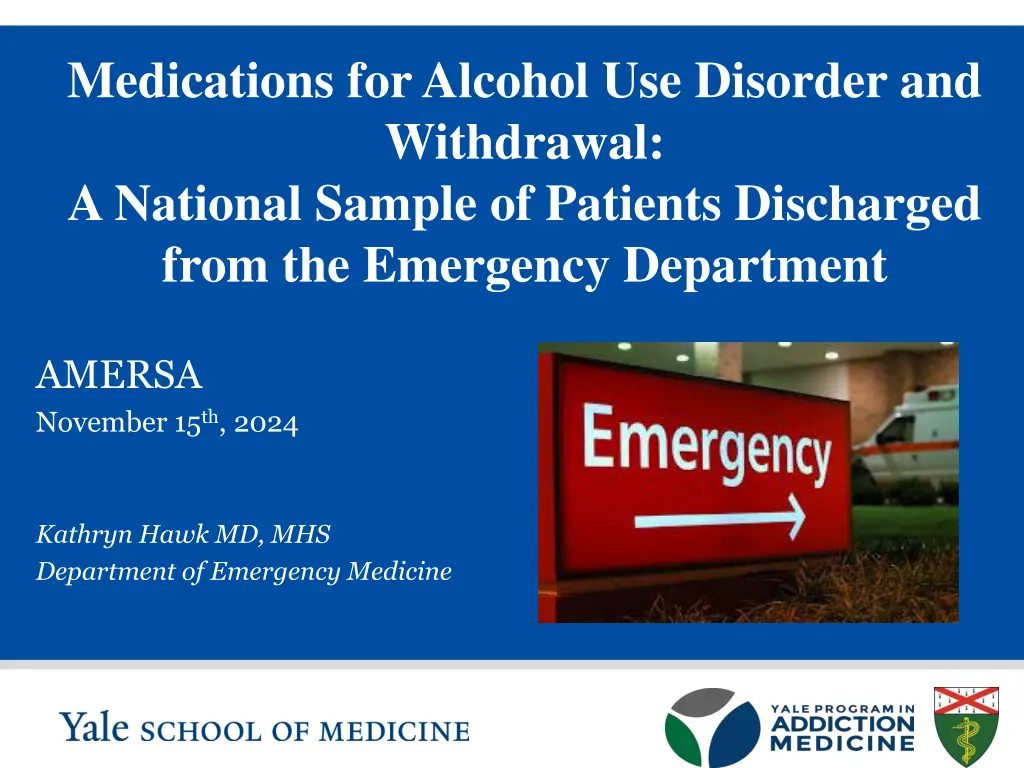
Medications for Alcohol Use Disorder and Withdrawal: National Sample Study
Explore the nationwide study on the prescription of medications for alcohol use disorder and withdrawal among emergency department patients. Learn about the underutilization of FDA-approved medications, the potential use of gabapentin, and the aim to improve clinical outcomes.
Download Presentation

Please find below an Image/Link to download the presentation.
The content on the website is provided AS IS for your information and personal use only. It may not be sold, licensed, or shared on other websites without obtaining consent from the author. If you encounter any issues during the download, it is possible that the publisher has removed the file from their server.
You are allowed to download the files provided on this website for personal or commercial use, subject to the condition that they are used lawfully. All files are the property of their respective owners.
The content on the website is provided AS IS for your information and personal use only. It may not be sold, licensed, or shared on other websites without obtaining consent from the author.
E N D
Presentation Transcript
Medications for Alcohol Use Disorder and Withdrawal: A National Sample of Patients Discharged from the Emergency Department AMERSA November 15th, 2024 Kathryn Hawk MD, MHS Department of Emergency Medicine S L I D E 0
Disclosures I have no conflicts of interest or disclosures to report Research Support: Elevance Foundation (PI: Venkatesh) NIAAA 1R01AA030568-01 (PI: Hawk) NIDA 3UG1DA015831-22S3; CTN 0145 (PIs: Hawk/Herring/D Onofrio) NIDA 1R61DA059169-01 (PIs: Hawk/Venkatesh/Taylor) NIDA 3UG1DA015831-19S1; CTN 0099 (PIs: D Onofrio/Fiellin) Foundation for Opioid Response (PI: Hawk) S L I D E 1
ACEP E-Quality Network: SUD Scott Weiner Craig Rothenberg Dhruv Sharma Pawan Goyal Prateek Sharma Megan Sambell Sam Shahid Arjun Venkatesh S L I D E 2
ACEP Emergency Quality Collaborative Engage emergency clinicians and leverage emergency departments to improve clinical outcomes and coordination of care S L I D E 3
ACEP E-QUAL Opioid Collaborative Learning Collaborative (6-9 months) Wrap Up Enrollment Enrollment questionnaire Baseline benchmarking data Online portal activities Webinars/toolkit* Collect CME* Follow-up benchmarking data CMS MIPS credit * E-QUAL participation not required to access S L I D E 4
Increased Alcohol-related Mortality S L I D E 5
Background In 2022, > 3.4 million alcohol related ED visits* Emergency clinicians are well positioned to treat ambulatory alcohol withdrawal and initiate medications for alcohol use disorder (AUD). FDA approved MAUD are underutilized. There has been growing interest in the use of gabapentin for the treatment of ambulatory alcohol withdrawal and cravings. S L I D E 6
Study Objective To evaluate the practice of prescribing medications for alcohol use among a nationwide sample of ED patients with alcohol use. S L I D E 7
Methods EDs participating in the 2023 EQUAL SUD Initiative were requested to abstract charts from 30 randomly selected ED visits before (pre) and after (post) participation in the 6- month learning collaborative. Charts selected based ICD-10 code of alcohol intoxication or withdrawal who are discharged from the ED Pre: September 2022 - February 2023; Post: July 2023- October 2023 Abstract medication administration in ED or prescription at discharge associated with withdrawal or AUD: benzodiazepines, phenobarbital, gabapentin, naltrexone, acamprosate, disulfiram, carbamazepine, or valproic acid. S L I D E 8
Alcohol-related ED visits 9,989 ED visits from 301 participating US EDs ED visit # % Total Visits ED location Rural/Critical Access Hospital 3,492 35.0 ED Volume <20K/year 3,670 3,437 1,232 191 1,459 36.7 34.4 12.3 1.9 14.6 20-40K/year 40-60K/year >60K/year Missing S L I D E 9
Results: Medication Administration Medications for alcohol withdrawal or AUD Tx were administered in 24.4% (2,438/9,989) ED visits ED Visits with meds administered % Visits with medication administration Benzodiazepines Phenobarbital Gabapentin Naltrexone Disulfiram Valproic Acid 2,213 243 28 11 2 7 90.7 9.8 0.1 0.005 0 0.003 S L I D E 10
Results: Medication Prescription Upon discharge, medications for AUD or withdrawal were prescribed in 11.2% (1,123/9,989) of ED visits ED Visits with Discharge Rx % Visits with Discharge Rx Benzodiazepines Phenobarbital Gabapentin Naltrexone Disulfiram Valproic Acid 1,037 37 33 25 2 4 92.3 3.3 2.9 2.2 0.002 0.004 Rx = outpatient prescription S L I D E 11
Limitations Voluntary participation of a national group of EDs Selection bias in charts reviewed/provided Indication for each prescription was not collected Existing prescriptions not captured Community/critical access ED prescribing practices may reflect training outside of EM S L I D E 12
Conclusions Overall, benzodiazepines are the most commonly administered and prescribed medications for patients that present to the ED with alcohol intoxication and withdrawal. FDA approved medications for alcohol use disorder, naltrexone, acamprosate and disulfiram, are were very rarely prescribed. Opportunities to improve practice of ED clinician prescribing of FDA approved MAUD are widespread S L I D E 13
SAEM GRACE-4 Guidelines: AUD Management in the ED Borgundvaag et al, AEM 2024 S L I D E 14
kathryn.hawk@yale.edu @kathryn_hawk S L I D E 15


